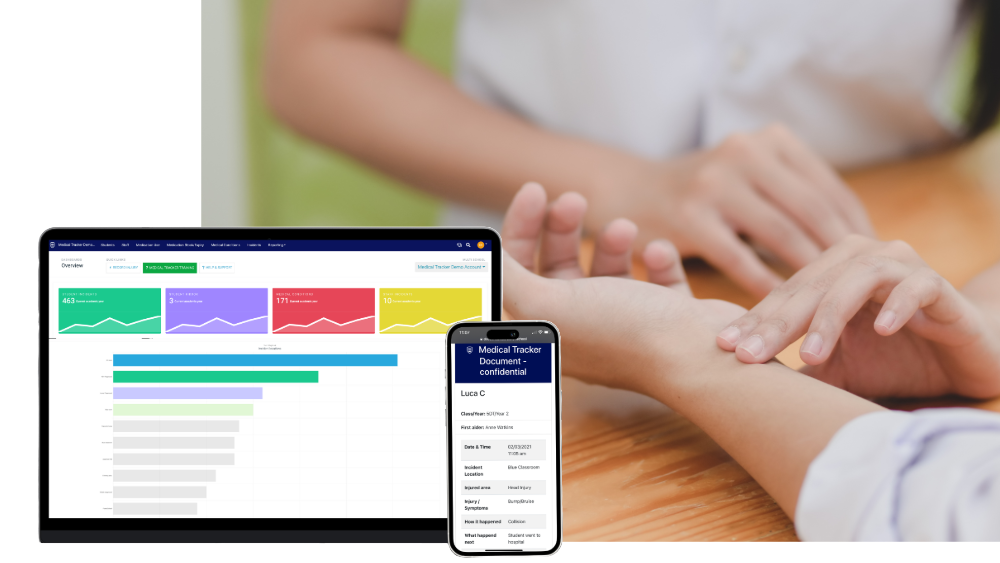
How confident are you that your school is doing everything possible to keep medical records accurate and up-to-date?
If you’re unsure, it’s time to take a closer look.
With schools under increasing pressure to manage health records, the importance of a streamlined, digital medical record system has never been clearer.
Why should accurate medical records matter in schools?
Accurate medical records in schools are vital for ensuring student safety and wellbeing. Schools need up-to-date information to respond efficiently and effectively, from managing chronic illnesses to dietary restrictions.
Incorrect use of medication in schools, including missed doses or incorrect administration, can lead to serious consequences for pupils. Even minor errors can risk students' health, worsening existing conditions or causing preventable emergencies. If you’re not keeping accurate records, you risk:
- The issue of wrong medication
- Out-of-date medication
- Administration of incorrect dosages
- Issue of medication to the wrong student
Schools have an ultimate responsibility to ensure that all medical records are kept up to date and have the correct information recorded, as it may potentially be lifesaving.
Ready to make managing your medical records easier?
Let’s look at five key steps you can take.
1. Standardise record-keeping practices
One of the simplest ways to standardise record-keeping is by having consistent templates for collating all medical information during enrolment.
Why? Having a template including allergies, medication, care plans, and emergency contacts reduces the administration time it takes to accurately collate data.
2. Train staff members on access and protocols
Effective medical record management doesn’t start with technology, it starts with making sure your staff are armed with the knowledge they need. Empower your staff to be confident, informed, and accountable when it comes to student wellbeing.
Staff should know that accurate medical records are not just an admin task; they are a frontline tool for protecting student wellbeing.
3. Implement a digital record system
Managing medical records through paper forms and spreadsheets is a thing of the past and longer viable in a situation where schools are held to ever-increasing safeguarding and compliance standards.
Digital solutions like Medical Tracker are designed specifically with safeguarding as the priority. Digital solutions shift medical record-keeping from a reactive task to proactive protection methods with automated reminders for expiring medication, flagging patterns in health-related absences, or quickly sharing updates with staff members.
4. Schedule regular reviews and audits
In a school environment, a single outdated medical record can result in a potential emergency. Accurate and up-to-date information is essential to ensure that staff can respond appropriately to any student’s medical needs.
Establishing regular reviews and audits ensures that students’ medical records, allergy updates, medication permissions, medication expiration dates, and emergency contacts stay current and reliable. It’s essential for building trust with families, guardians, and carers.
5. Assign a Medical Records lead
Assigning a designated person empowers your school to have an expert at the heart of your school’s strategy to safeguard pupil health.
The value of this role goes far beyond data management, turning information into action. Forward-thinking schools invest in this role not just to manage risk, but to lead on student wellbeing.
Final thoughts
Managing medical records isn’t just a compliance requirement, it’s a fundamental part of protecting students in education. With the right systems in place, schools can transform medical record-keeping into a proactive safeguarding strategy.
These five steps are not complex, but they’re critical to empowering your staff with the correct digital tools and processes that all play a vital role in creating a safer and responsible school environment.
If you would like to find out more about Medical Tracker, click here.

